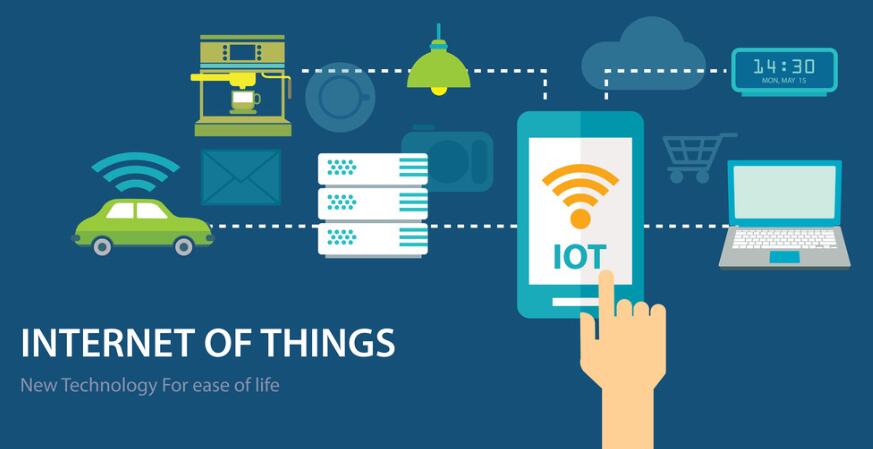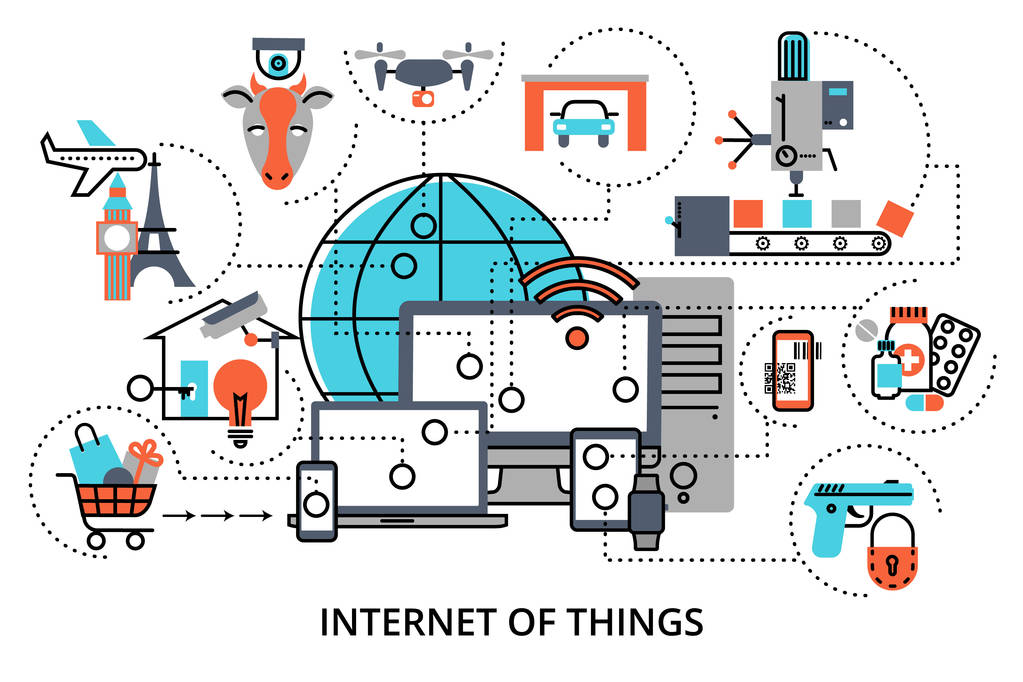Is LoRaWAN the solution to cellular IoT challenges?


A decade ago, there were high hopes for the cellular networks that will power the massive Internet of Things. In fact, according to a recent report from Enterprise IoT Insights, both Cisco and Ericsson predict that the connected device market will reach 50 billion devices by 2020. But the overall IoT market is growing more slowly than forecasts at the time, and just over a year after those forecasts ended, there are currently only 12.4 billion IoT devices in circulation. However, LPWAN solutions such as LoRaWAN can easily adapt to IoT application needs and will have a greater impact on the massive IoT.
Massive IoT consists of a large number of low-complexity, low-cost devices connected to networks that support relatively low throughput speeds. This combination of sensor devices and networks built for IoT is changing the way businesses operate, how public infrastructure is monitored, and how organizations implement sustainability initiatives. So it's easy to see why there were high hopes for cellular 10 years ago. After all, cellular connectivity dominates other types of devices. Operators already have the infrastructure, so why can't it be easily used to power the massive IoT? It seems that the development of large-scale IoT is only a few years away. And then a few more. Always on the horizon.
Cellular IoT Challenges
It turns out that the technology required for large-scale IoT deployments did not exist when these predictions were made. Among other challenges, there is a mismatch between infrastructure costs, device battery life requirements, and availability. Cellular carriers are trying to connect the predicted billions of devices using technology not built specifically for IoT.
Of the IoT devices currently deployed, 2G and 3G represent the bulk of cellular IoT connections, with 53.1% using one or the other. This is problematic because carriers are phasing out these legacy technologies while their replacements are still struggling to gain traction. Carriers such as AT&T and T-Mobile are shutting down their 3G networks this year, while 2G networks have fallen behind in much of the world, with some parts of Europe set to follow. 47% of users were not notified of the network shutdown, creating an uncertain path forward.
Cellular low-power wide-area network (LPWAN) technology has evolved in recent years as use-case requirements have become clearer, but even in its most prime regions, challenges remain. take China as an example. It is the largest and fastest growing market for NB-IoT and Cat-M1, with 100 million cellular LPWAN chipsets sold in the region in 2020, according to Sequans' internal estimates. The rest of the world is estimated to account for only 5 million NB-IoT chipsets. In China, data plans and investments in infrastructure have made the technology popular, but even in China, hardware suppliers are struggling to turn a profit.

Let's take a look at three cellular IoT challenges and how LoRaWAN can provide solutions.
1. Expensive connections
Infrastructure costs, in particular, have been one of the biggest barriers to large-scale IoT deployments using cellular networks. Cellular requires expensive infrastructure to support it, including towers costing over $100,000 to build, expensive gateways, and a lot of labor required for network deployment and ongoing management. Due to the inherent deployment model of cellular networks, operators cannot build networks on demand, unlike permissionless LPWAN solutions such as LoRaWAN, which can easily adapt to IoT application needs. LoRaWAN hardware also has a lower bill of materials (BOM) cost, which reduces overall infrastructure and solution costs compared to cellular-based solutions.
This does not even take into account functional differences in key areas such as end-device power consumption and its associated costs in large-scale deployments. Communication profiles for the most common use cases of NB-IoT, such as asset tracking, smart metering, and wearables, result in high power consumption for cellular devices. Supporting more power-hungry devices inevitably leads to battery drain, which is accentuated by the inherently "more chatty" nature of NB-IoT.
Once the device is deployed, firmware updates for cellular devices typically consume longer battery life compared to LoRaWAN devices, making LoRaWAN a more viable solution for projects that need to last longer in the field.
According to Semtech, the overall operating power consumption of LoRaWAN is three to five times lower than that of NB-IoT. Battery life with NB-IoT is also not great, as ABI Research found that LoRaWAN devices have an average of more than five years longer battery life, providing longer lifespans, depending on the use case. A team of researchers from the Universities of Bologna, Trento and the Integrated Systems Laboratory has found that, based on their experimental data using sensors developed to monitor structural integrity, LoRaWAN battery life can be longer than NB-IoT in certain applications 10 times.
2. Uneven reach and fewer choices
Due to the delayed rollout of NB-IoT and CAT-M1 deployments, cellular IoT solutions have not yet been deployed at scale. However, LoRaWAN is growing rapidly due to flexibility in deployment models and growing interoperability among network operators, which will combine to provide global coverage in the near future.
According to the LoRa Alliance, more than 160 countries now have public LoRaWAN networks, and according to the GSA, 64 countries have NB-IoT or LTE-M operators. Lack of networking and interoperability issues make it more difficult to manage deployments across locations using cellular IoT technology. On the other hand, LoRaWAN networks are experiencing significant growth. With the integration between various terrestrial networks and satellite connections, and advancements such as the LoRa Alliance's LR-FHSS transmission data rate, collaborations such as the Multimodal IoT Infrastructure Consortium (MMIIC) are delivering 100% global coverage by 2022 the way.
In addition, certified cellular terminal equipment has been slow to market and has been negatively impacted by the aforementioned obsolescence of 2G and 3G. Instead, the LoRa Alliance offers a robust device certification program that gives end users confidence that sensor-enabled end devices are compliant with the LoRaWAN specification. End device compliance ensures correct behavior on the network, reduces support costs and prevents product failures later when it is more expensive to fix. This type of policy and regulation will go a long way in ensuring the reliability of end equipment that is expected to remain in the field for decades.
Some operators have even abandoned NB-IoT, as NTT DoCoMo and Dish Network did last year, shifting their focus to Cat M1, LTE-M and 5G respectively. There's a lot of confusion about which cellular technology will win, and it's everyone's guess -- even among mobile network operators.
3. 5G is not the solution
Both NB-IoT and Cat M1 are 5G compatible 4G technologies, so they are capitalizing on the 5G hype. As the sunset of 2G and 3G approaches, 5G positions itself as the solution that will fill the void when more than half of current cellular IoT connections are no longer working. However, enterprise adoption has been the lowest to date, with only 290 publicly disclosed private 5G networks deployed worldwide, and spectrum usage for 5G has declined significantly.
While 5G enables NB-IoT and Cat M1 to provide cellular solutions for large-scale IoT deployments, they are still a long way from filling the void. In the long run, several IoT technologies will coexist to maximize the ROI of IoT deployments. Cellular technology will support use cases that require constant communication, higher data rates, or lower latency, while LoRaWAN will serve as the primary technology for use cases requiring long range, deep indoor penetration, battery powered devices, coverage in challenging environments, and Implementation of a mix of public and private networks is required.
Connect the unconnected with LoRaWAN
LoRaWAN is poised to provide the cost structure and flexibility required for large-scale IoT deployments. It offers longer range, longer battery life, better propagation characteristics, and more power-efficient maintenance, which combine to effectively support more use cases. These are all reasons why ABI Research expects LoRaWAN to account for more than half of all non-cellular LPWAN connections by 2026.
The range of LoRaWAN is especially important because it has the potential to reach environments where cellular signals are impenetrable or where cellular infrastructure is lacking. From rural and rugged environments to indoors and even deep within solid structures, anywhere benefits from the propagation characteristics of LoRaWAN.
Security is another key differentiating factor, as cellular signals have the potential to be intercepted as they hop from one point on the network to another. LoRaWAN provides end-to-end security built into the protocol. LoRaWAN also supports public, private, and hybrid models, giving enterprises great flexibility in how they deploy their network infrastructure.
The more than 500 members of the LoRa Alliance work closely to advance an open global protocol designed to support more than 20 years of use in the field, compared to 3GPP's five-year cycle of introducing new protocols and deprecating older ones. The International Telecommunication Union (ITU) recently ratified LoRaWAN as a global standard for LPWAN, further cementing LoRaWAN's position as a reliable, open standard.
end game
First movers are paving the way for IoT Analytics' latest forecast of 1 billion LoRaWAN devices by 2025. They are supported by innovative deployment models and partnerships that the cellular market still lacks. With LoRaWAN being used to detect the physical world using sensors that last over a decade and update over the air when needed, customers are free to explore limitless use cases and start benefiting from the insights their data can generate . The potential of massive IoT has finally been unleashed.